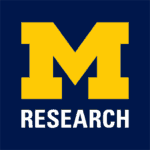The University of Michigan is joining with a team of industry, government and academic partners to develop the foundations of a commercially viable ecosystem of connected and automated vehicles for moving people and goods. Such a system has the potential to dramatically improve safety, sustainability and accessibility.
U-M created Mobility Transformation Center (MTC) to pull together the diverse expertise and resources required to realize the unprecedented potential of this emerging technology, culminating in the implementation of a working system of connected and automated vehicles in Ann Arbor by 2021.
Three aspects of the MTC are key to its success:
- Partners: The MTC has created a public-private partnership to work on connected and automated mobility systems. National, state and local governments, along with a wide variety of industries will all play roles in shaping the future of mobility. MTC partners and affiliates encompass these varied stakeholders, as well as other academic institutions working in this area.
- Deployments and Testing: The MTC will provide real-world testing with large cohorts of users in a variety of on-roadway settings in Ann Arbor and across southeast Michigan, as well as in a unique off-roadway test facility that simulates the complexities of an urban environment.
- Interdisciplinary Approach: The challenges ahead are not just technical. The MTC draws on the broad expertise of U-M and its partners to address the host of legal, political, social, regulatory, economic, urban planning and business issues that must be addressed to devise and implement practical systems that take advantage of emerging technologies.
The MTC will accelerate progress by working with partners to:
- Envision the future and identify challenges
- Conduct research on new technologies and innovations
- Show how new concepts and technologies can be integrated into a new mobility system
- Use both off-roadway and on-roadway test beds to evaluate innovations
- Address social, economic, regulatory, and policy issues key to the implementation of a mobility system
- Educate new generations of students prepared to continue the process of innovation in mobility
- Identify new business opportunities
A world transformed
 Connected and automated mobility leads us to reset the objectives for our transportation system:
Connected and automated mobility leads us to reset the objectives for our transportation system:
- Motor vehicle fatalities and injuries reduced by a factor of 10
- Motor vehicle energy efficiency increased by a factor of 10
- Contribute to major reductions of carbon emissions
- New transportation economy startups increased by a factor of 10
- System user time reduced by a factor of 2
- Freight transportation costs reduced by a factor of 3
- Use of infrastructure capacity increased by a factor of 5
- Need for parking reduced by a factor of 5
- Physical proximity to transportation enhanced by as much as a factor of 2
- Land use for mobility, including parking, reduced by a factor of 2
Learn more about U-M and its efforts to revolutionize transportation.

